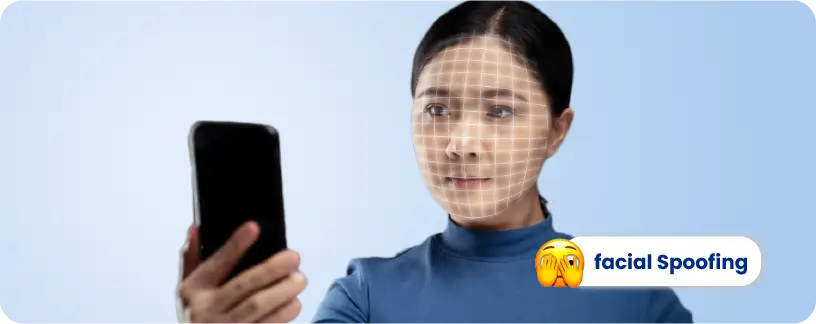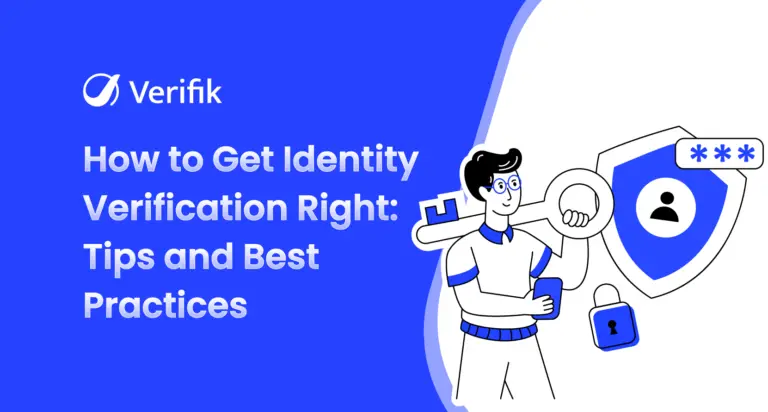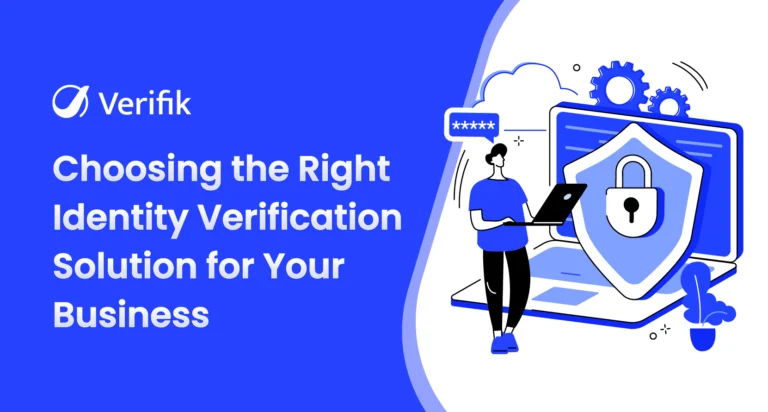The world in which we live is becoming more connected every day, millions of applications, platforms, websites and users are born, which is why security, authenticity and identity verification have taken importance, however, cybercriminals continue to attack with thousands of fraud modalities, in fact, one of the most worrying is Spoofing, a type of identity theft that has endangered the security of millions of users around the world.
This sophisticated and dangerous type of cyber attack is now so common that it has become one of the main problems within companies around the world and even though criminals devise new threats every day, cybersecurity technology has also established ways to detect and even prevent them.
But if we´re trying to stablish solutions, we will first explore what facial spoofing is and how this type of cyber attack works, we will analyze the vulnerabilities and risks it represents for digital businesses around the world, and of course what is the highly effective technological tool to detect and combat it.
Facial Spoofing: The New Cyber Threat
Facial spoofing is a type of online fraud that has grown fast due to its great ability to get around traditional security systems. It is a form of fraud that uses such sophisticated techniques that it turns millions of users into victims on a daily basis, and thus the monetary losses are so great that they put digital companies and businesses at risk.
“Nearly 42 million people were victims of identity fraud in 2021, costing consumers $52 billion in total losses, according to a new report co-sponsored by AARP.”
What is facial spoofing?
Facial spoofing is a cyber fraud that consists of simulating a person’s identity through the use of manipulated images . In this type of impersonation, criminals use different methods and tools to deceive authentication systems.
This threat has proven to be particularly worrying for businesses that need digital incorporations of users, so if you have a company that performs important digital interactions, it is essential that you understand how this type of fraud works to avoid being a victim again.
Most common facial spoofing methods
Cybercriminals who carry out facial spoofing employ a variety of ingenious methods to achieve their fraudulent goals. The most common techniques include:
-
- Image Manipulation: Cybercriminals may try to incorporate users with photographs or 2D images, and to make them more similar, these can be altered in image editing tools.
-
- Synthetic Image Generation: By using artificial intelligence algorithms, cybercriminals can create synthetic faces that look real, but do not actually represent a real person.
-
- Deepfakes: Criminals use this technique to create fake videos that appear real by placing a person’s face on another body or situation.
Detecting and Preventing Facial Spoofing
Detecting and preventing facial spoofing has become a priority in the field of digital security.
As a result, facial recognition technology solutions are enabling companies to really know their customers and ensure the authenticity of their users.
“According to Data Bridge Market Research, the growth of online transactions, coupled with the increase in cyber-attacks is what is driving facial biometric technology”.
How to Detect Facial Spoofing with Biometrics?
Proof of Life, or Liveness, is the biometric authentication technology that has emerged as a trusted solution.
For in a context where online security is a concern. This technology represents a breakthrough in the fight against facial spoofing and other frauds.
So adopting preventive measures such as Proof of Life or Liveness has become essential to:
-
- Ensure the security of digital transactions
-
- Protect users from phishing threats
-
- Prevent companies from losing money or reputation when they are caught up in fraud cases.
What is Liveness and how does it work?
Liveness is a biometric technology that combats identity theft, facial spoofing or other fraud attempts.
It is based on the detailed analysis of the distinctive physical characteristics of the user’s face in a three-dimensional manner.
During the identity validation process, the system prompts the user for a photo that captures unique features of the face.
With this, biometrics verifies the user’s authenticity.
The effectiveness of Liveness lies in its rapid ability to distinguish between a real physical presence and an attempted impersonation through photos.
This is how this technology becomes a secure and effective method to protect the identity of users and companies.
Anti-spoofing Use Cases with Liveness
Liveness extends to a variety of industries and scenarios where secure and reliable authentication is essential. Verifik has already established fraud-free ecosystems in companies where biometric recognition is becoming indispensable to verify the identity of their customers.
But in particular this technology has revolutionized the financial sector because it ensures that transactions are made by legitimate users and prevents unauthorized access to bank accounts.
“According to Statista companies in the financial sector use approximately 28% of biometric technology in the United States.”
Also e-commerce companies are using our technology to prevent unauthorized people from accessing their accounts and payment systems, and these are just some examples of how Liveness and more biometric validation services from Verifik.co have become an essential ally for companies to build secure digital ecosystems, protect their users and stop having economic or reputational losses due to fraud cases.
Combat Fraud with Facial Biometrics
By implementing Verifik’s facial recognition API, companies have been able to:
-
- Adopt advanced identity verification technologies
-
- Save costs
-
- Improve the experience for their users
-
- Effectively detect fraud.
Proof-of-life technology has proven to be an unrivalled tool in the fight against fraud. It reduces the possibility of impersonation and creation of fake accounts by proving the authenticity of users’ physical presence.
Verifik presents a machine vision solution for identity authentication and facial recognition, based on an Edge-AI architecture that completely eliminates the need for servers.
When adding your customers, it only takes 3 seconds to take a selfie, upload it to the platform and verify that the user’s physical presence matches other photos and documents.
Yes! All in one platform, the technological solution to authenticate, validate and verify identities. Have you already implemented this technology in your business? Sign up and try it for free or contact us for a personalized consultancy on our tool.
CEO and Founder of Verifik
As the founder and CEO of Verifik, Johan Castellanos is on a mission to reshape the future of digital identity. With a passion for privacy and digital trust, he’s building groundbreaking tools like ZK Face Proofs to help businesses and users connect safely in both Web2 and Web3 spaces.





